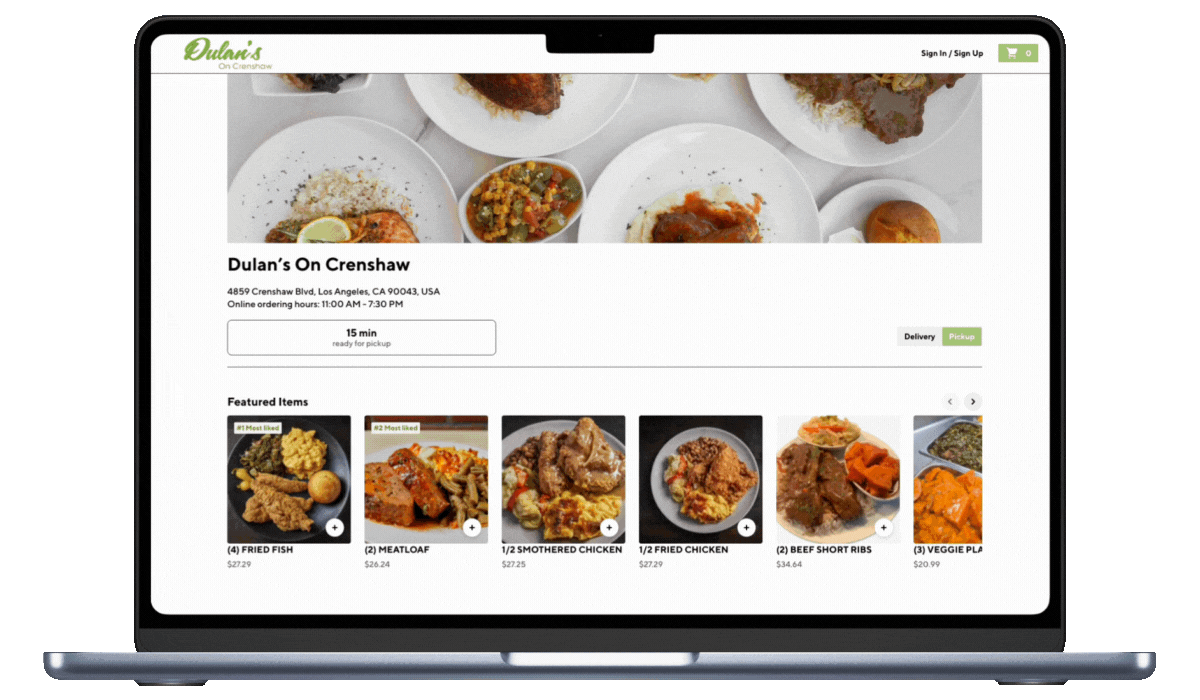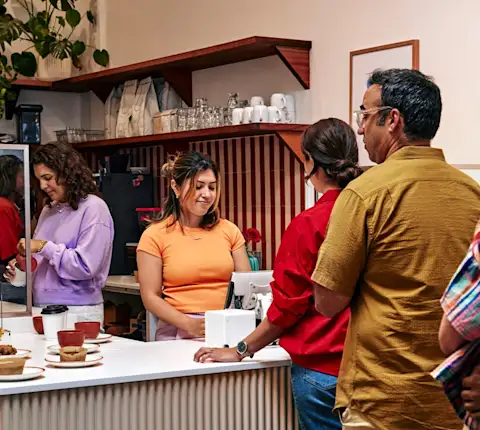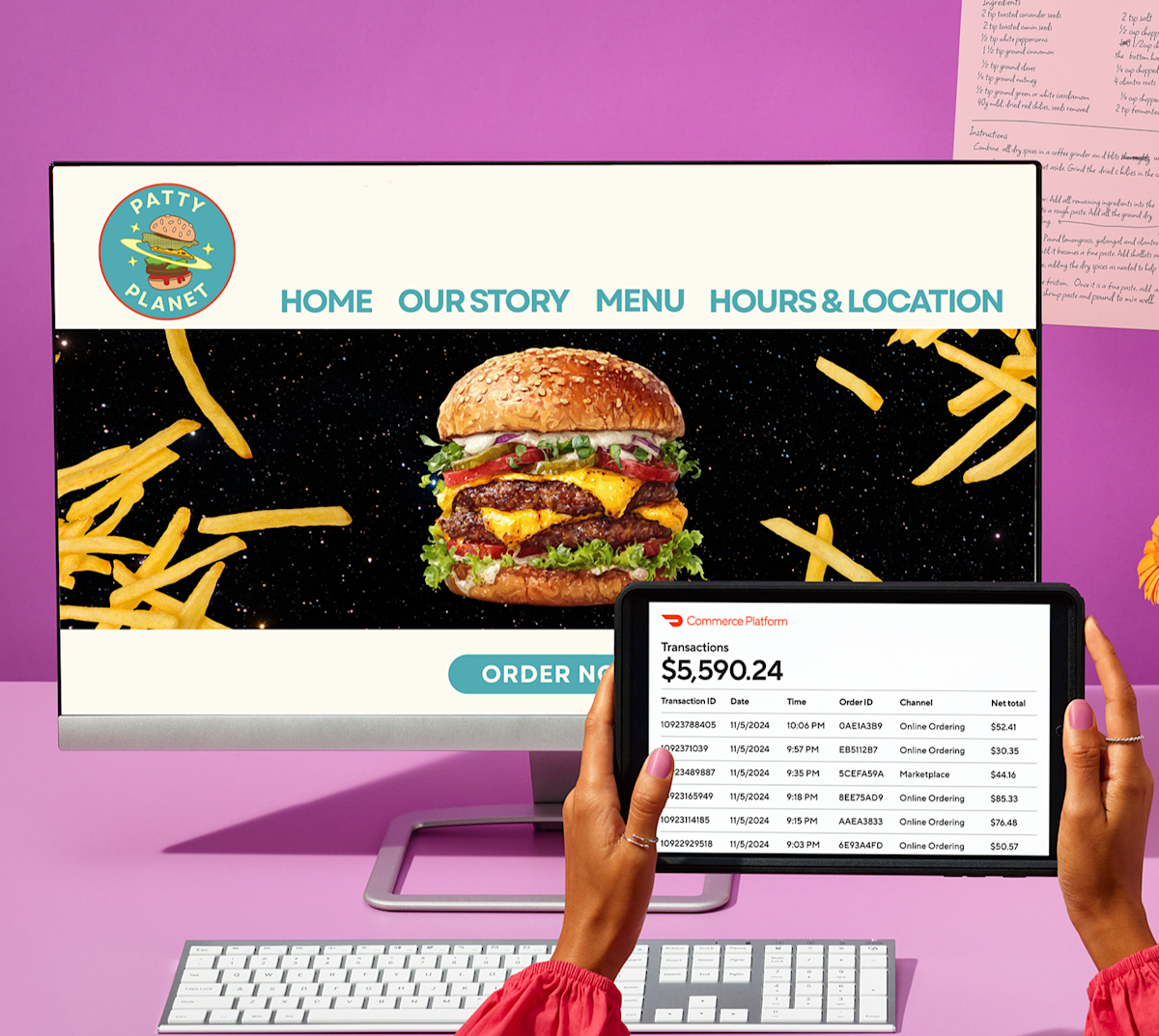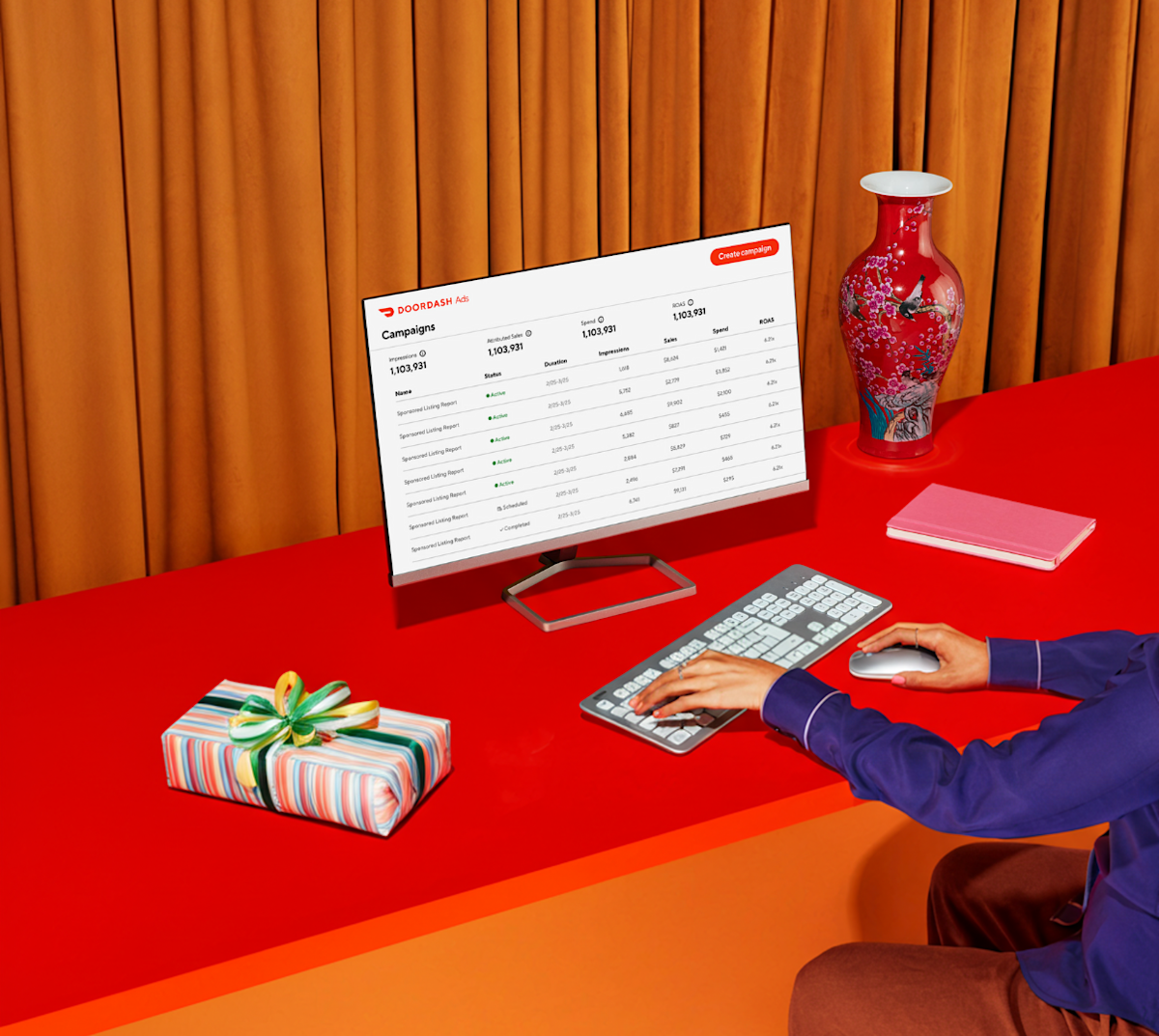A strong restaurant website design is a must in the modern age. According to the 2025 DoorDash Delivery Trends Report, ordering from a restaurant's website or mobile app is the second most popular way to order delivery, behind third-party apps. This means that restaurants that have poorly designed websites, or worse, no website at all, could be missing out on tons of orders.
But it's not enough to just have a website for your restaurant. There are many ways a website can go wrong — poor user experience, generic text, and menus that fail to include ingredients, photos, or even prices. Luckily, these restaurant marketing mistakes are all completely avoidable.
Keep reading to learn what factors to consider when designing your restaurant website. Plus check out three restaurant website examples from merchants who used the DoorDash Commerce Platform to launch their sites.
With branded websites, available with all three Commerce Platform packages, we do the heavy lifting for you, designing your site and matching it with your brand's look and feel.
Why restaurant website design matters
Your restaurant’s website is often the first impression guests have of your brand. Whether someone discovers you on Google, clicks a link from social media, or scans a QR code at your table, your website sets the tone for what they can expect.
A well-designed, mobile-optimized restaurant website can:
Drive more orders by reducing friction in the customer journey
Build trust and credibility with a professional look and clear information
Boost your SEO so more customers find you through local search
Reflect your brand identity across digital and physical experiences

Components of great a restaurant website design
Local SEO strategy
Local restaurant SEO is a secret ingredient for strong marketing. When prospective customers type food-related keywords into Google (think: "sushi near me," "best Austin BBQ," or "Boston seafood restaurant"), businesses with strong local SEO rise in search engine rankings, making them easier to find.
To boost your search engine result page (SERP) rankings, follow best practices like:
Incorporating local SEO keywords in page titles and descriptions
Including image alt-text
Adding internal links between pages
Optimizing your Google Business Profile
If you'd prefer to take a more hands-off approach to local SEO, DoorDash can help! With the DoorDash Commerce Platform, you get access to a branded website, optimized for search, and a Google Business Profile integrated with your Online Ordering menu. These make it easier for consumers to find your business online, learn about your brand, and, of course, place an order.
Mobile-friendly design
With mobile devices accounting for nearly 65% of global web traffic, restaurants need to invest in building mobile-friendly websites to make it easy for customers to order directly from their phones.
Here are some tips to get started:
Pare down your copy so mobile customers can see the most important information right away
Use well-placed buttons to make your online ordering system easy to find
Pay attention to page speed to ensure your mobile site loads quickly to reduce bounce rates
Implement a responsive restaurant website design that adapts to the size of customers' mobile device screens
With branded websites available with the DoorDash Commerce Platform, DoorDash does the heavy lifting of creating a mobile-friendly website for you. From highlighting key information like hours, location, and contact information to infusing your site with your business's look and feel, branded websites make it easy to launch mobile-friendly restaurant websites.
Explore branded websitesIntegrated online ordering
In 2024, 70% of consumers said they ordered restaurant food delivery in the last month, with 36% preferring to order from a restaurant's website or app. Customers have spoken: Online ordering is here to stay.
Online Ordering, available with the DoorDash Commerce Platform, enables restaurants to add commission-free* online ordering to their website to help grow their business and acquire new regulars. Adding Online Ordering to your website and social channels can increase sales by up to 8% of your current Marketplace sales.**
For Dulan's on Crenshaw, a beloved Los Angeles soul food restaurant, the average order value of orders placed through Online Ordering is nearly 20% higher than those placed through Marketplace.


"Online Ordering helps us appear like we have our own ecommerce platform, with our own branding. Our website gets hundreds of hits every day, and it turns those website visitors into actual sales. That's having a huge impact on our business."
Custom branding
Whether a loyal guest is browsing your site for menu updates or a new customer is checking out your online menu for the first time, they should walk away with an understanding of the look and feel of your brand.
When designing your restaurant, you'll want to make sure your photos, fonts, colors, and more align with your business's branding. Not only is this helpful in building brand awareness, but it can also positively impact your bottom line.
With branded websites, available with the DoorDash Commerce Platform, DoorDash handles all of the backend work that goes into creating a professional website. Our experts create a restaurant website design using your existing DoorDash assets, making the process simple and efficient.
Explore branded websitesIntuitive user experience
When someone lands on your website, it should be as easy as possible for them to convert into a customer. If your interactive menu is difficult for site visitors to find, it can make it more challenging for them to place an order, which may cost you money in the long run.
To make it as easy as possible for site visitors to spend, consider adding a Smart "Order Now" Button or pop-up to your site. Available with the Commerce Platform Boost and Pro packages, these hard-to-miss calls to action enable your site visitors to access your restaurant ordering technology from any page of your website.
Triple Beam Pizza saw a 10% increase in weekly order volume after adding Smart “Order Now” Button.***
Read Triple Beam Pizza's full storyHow to get started with restaurant website design
Getting started with your restaurant website design doesn’t have to be overwhelming — especially with tools built for busy restaurant owners. Here's how to begin:
Define your goals
Before you start with restaurant website design, think about what success metrics you'd like to drive with your website. Is your goal to increase sales and orders? To get more dine-in customers? To drive visitors to your Instagram page? All of the above?
No matter what your goals are, define and track them so you can see how your website positively impacts your business.
Gather your assets
If you choose to build your website yourself, you'll need:
Your logo and brand colors
Photos of your food and restaurant
Menu (with prices and descriptions)
Contact info and hours
Links to your social media
If you use the DoorDash Commerce Platform to build your website, the DoorDash team will use your existing DoorDash assets so you don't have to gather them yourself.
Choose a platform or partner
You can:
Use DIY website builders like Wix or Squarespace
Work with a designer
Choose a system like the DoorDash Commerce Platform, which builds and hosts your website for you and has Online Ordering already built in
Make it SEO-ready and mobile-first
Make your website easy to find and simple enough for small phone screens. Most online orders come from phones, and local SEO helps customers find you on Google. Look for SEO-driven, mobile-friendly templates or systems like the DoorDash Commerce Platform that handle this for you.
Launch and link it everywhere
Share your new website on Google, Instagram, Yelp, and physical materials like menus or receipts.
Restaurant website design examples from real DoorDash merchants
Check out three great restaurant designs from real merchants using branded websites available with Commerce Platform.
Kebabish Grill and Fried Chicken

Located in Springfield, Massachusetts Kebabish Grill and Fried Chicken serves up delectable kebabs and fried chicken. To entice website visitors to order, they've opted for a website with a header featuring a photo of their dishes to the right and their logo, tagline, and call to action (CTA) buttons to the left. Additionally, they've also included a Smart "Order Now" Button at the bottom of the page.
By prioritizing CTA buttons, they make it easy for guests to move from the restaurant's striking homepage to their online ordering website.
See Kebabish Grill and Fried Chicken's webiteCali Style Burger

Cali Style Burger, a three-location burger chain, brings the taste of the Golden State to North Carolina with fresh ingredients, signature sauces, and handcrafted burgers. The burger restaurant's website design puts their juicy burgers and California-inspired restaurant description front and center. And with an "order with app" button paired with the Smart "Order Now" Button at the bottom of the page, Cali Style Burger's site makes it easy to win and engage customers.
See Cali Style Burger's websiteClockwork Pizza

Clockwork Pizza, a Tempe, Arizona, hand-tossed pizza restaurant, uses a restaurant website design that overlays their brand name and tagline over their delectable dishes. Like Cali Style Burger, this pizza spot directs customers to download their branded mobile app directly from their homepage in addition to showcasing their food, reviews, and more.
See Clockwork Pizza's websiteDrive sales with strong restaurant website design
As technology advances, customers will continue searching for food options online. Stay ahead of the game with a branded website available across all three Commerce Platform packages. Our team is standing by to help you design and launch your website.
Get my branded website*2.9% + $0.30 payment processing fee applies
**Based on internal DoorDash data from Jan 2025 through May 2025
***Comparison of weekly order volume pre‑Smart Button in August 2022 vs post‑Smart Button in September 2022.




